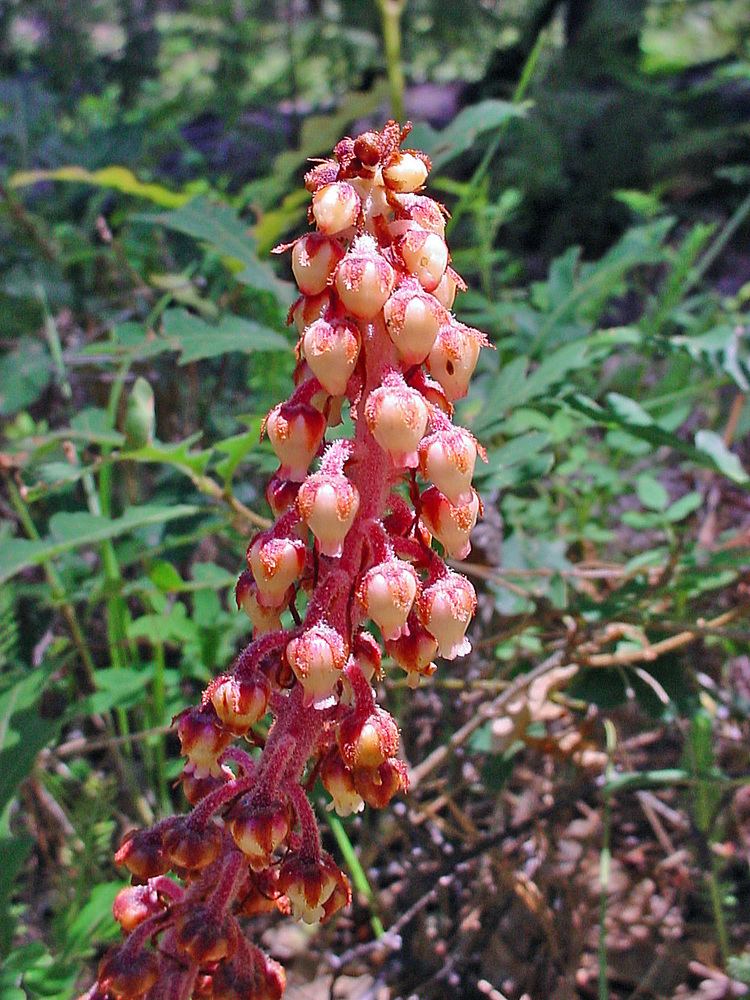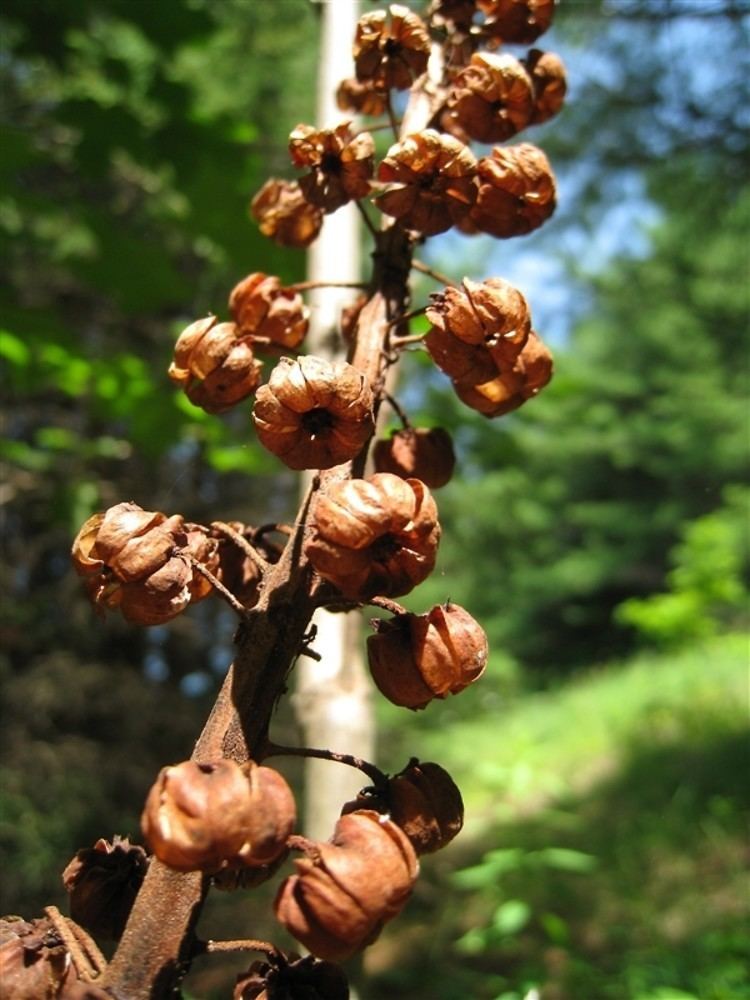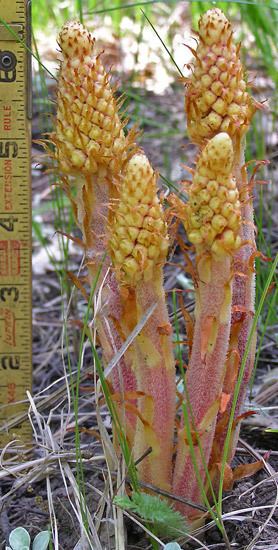Species P. andromedea Higher classification Ericaceae | Scientific name Pterospora Rank Genus | |
 | ||
Similar Sarcodes, Allotropa, Ericaceae, Hemitomes, Pityopus | ||
Pterospora, commonly known as pinedrops, wooodland pinedrops, Albany beechdrops, or giant bird's nest is a North American genus in the subfamily Monotropoidiae of the blueberry family, and includes only the species Pterospora andromedea. It grows in coniferous or mixed forests. It is widespread across much of Canada as well as the western and northeastern United States to and northern Mexico (Sonora, Coahuila, Durango, Nuevo León). Along with Monotropa it is one of the more frequently encountered members of the Monotropoidiae.

The genus name is derived from the morphology of the seeds which have narrow flaps of tissue on the side and therefore appear winged: ptero (Gr.) = winged, spora (Gr.) = seed. The specific name andromedea derives from the resemblance of the flowers to those of another genus in the Ericaceae, Andromeda.

The visible portion of Pterospora andromedea is a fleshy, unbranched, reddish to yellowish flower spike (raceme) 30–100 cm (12–39.5 in) in height, though it has been reported to occasionally attain a height of 2 meters (6.6 feet). The above-ground stalks (inflorescences) are usually found in small clusters between June and August. The inflorescences are hairy and noticeably sticky to the touch. This is caused by the presence of hairs which exude a sticky substance (glandular hairs). The inflorescences are covered by scale-like structures known as bracts. The upper portion of the inflorescence has a series of yellowish, urn-shaped flowers that face downward. The fruit is a capsule.

Like all members of the Monotriopoidiae (see Monotropa), Pterospora andromedea lacks chlorophyll (trace amounts have been identified, but not enough to provide energy for the plant or to color it). Plants exist for most of their life as a mass of brittle, but fleshy, roots. They live in a parasitic relationship with mycorrhizal fungi, in which plants derive all their carbon from their associated fungus, but the relationship is not yet well understood. The term for this kind of symbiosis is mycoheterotrophy. In Pteropspora the association is with a very limited number of fungi in the genus Rhizopogon, including Rhizopogon subcaerulescens, R. arctostaphyli, and R. salebrosus. A note of caution: unlike plants, fungi are not yet well categorized and so species' names are likely to change frequently as more research is done and Rhizopogon is particularly hard to taxonomically categorize. Pterospora has yet to be discovered with any species outside the genus Rhizopogon.

Pterospora has consistently been shown to be more closely related to Sarcodes than any other member of the Monotropoidiae.


